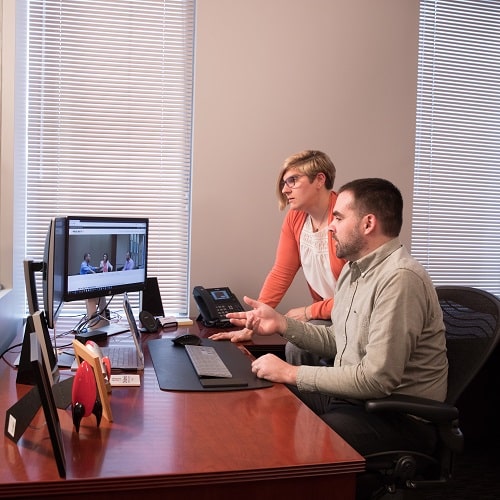Why New Employee Training is Actually an Ongoing Process

New employee training is a key component of your onboarding process. When new hire training is carefully planned, it will set your team members up for success and transition them into their new role as smoothly as possible.
However, it’s important to remember that new team members are processing a lot of information in the first few weeks on the job. Even established employees can find it difficult to remember all the nuanced things that they have learned and need to know about working at your company. That’s why you need to think of training as a long-term, ongoing process and provide your team members with resources and additional trainings to help keep what they have learned fresh and to provide them with updates as needed.
Provide a Written Guide
Providing a written guide with instructions and tips for a specific task is not only helpful in the initial training for a role but can also be useful for team members later on as reference material. When a team member needs to troubleshoot a task or has a question, they can look to their written guide to check for an answer first, and then move on to asking for assistance from their supervisor if they can’t find the answer there. Written guides are also helpful for those that learn best by reading and writing rather than watching, listening, or participating in hands-on activities.
When providing written guides, be sure to store them in a place that is accessible to your entire team so they know where to find them later on. Even better, you can provide your employees the opportunity to recommend edits to the guides while using them, as this can help improve your training materials for future new team members.
Conduct Recurring Training Sessions
Training is an ongoing process, and it’s important to regularly check-in to make sure team members are retaining the information and skills they need in order to perform their jobs well. Recurring training sessions should be conducted at regular intervals to check in on an employee’s progress and to make notes of areas where further training will be beneficial. This is also an opportunity to introduce and train team members on any policies, processes, procedures, or tools that will help them complete their work more efficiently while also keeping their skills sharp.
Consider a Learning Management System
For many organizations, a learning management system (LMS) can help streamline the initial training process and continued on-the-job training and education. An LMS typically involves not only the administration and delivery of training courses, but also provides documentation and reporting. These systems can include a variety of content (text, video, audio and more), and offer great benefits like fairly evaluating a team member’s training progress and the ability to organize and store lots of data in one location.
With an LMS, you can also update and maintain your training materials relatively easily and can create a path that team members need to follow to ensure that they are completing their training sessions in a timely manner, as well as determine if further training in a particular area is necessary for certain team members.
When you have a solid training program in place, your team members are better equipped to be more productive and successful in their roles, which will help set the entire business up for success. Setting up a new hire and ongoing employee training programs take time, but it’s a great investment in the long run for your overall operations.
Related Posts
Subscribe to Rocket IT's Newsletter
Stay up to date on trending technology news and important updates.

Find out if Rocket IT is the right partner for your team
Claim a free consultation with a technology expert.










